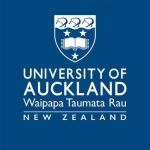Congestion Charges Right Decision for Auckland
Professor Tava Olsen, Ports of Auckland Chair in Logistics Supply Chain Management at The University of Auckland Business School, supports congestion charges even if there isn’t a need to raise revenue, because she believes they are a solution to clogged transport networks and struggling productivity statistics.
Done wrong, congestion charges can actually harm a city’s infrastructure, but Professor Olsen believes a system such as that used by California is ideal for Auckland.
“Done right, congestion charges can change behaviour,” Professor Olsen says. “If you make it more expensive to travel at peak times and people who are flexible in their plans move to driving off-peak, then you have reduced congestion.
“What people don’t realise is that when a system like Auckland’s transport network is highly loaded, even a small decrease in usage – say 1% - can result in a significant decrease in congestion delays. In fact, I’d suggest that we could see 10% decreases in transport delay if we can achieve just 1% decrease in usage.
“Congestion charges can move the behaviour of a sufficient number of people to the extent that benefits to traffic flow are huge.”
The Californian system involves HOT lanes – high occupancy/toll lanes – where buses and vehicles with two or more passengers travel free but single occupancy vehicles pay a toll.
“These tolls vary dramatically as road congestion changes, and the current price of using a road is posted at each entrance to the lane,” Professor Olsen says. “The prices are set so that the lane always flows at around 100km per hour, and the charging is done electronically through in-vehicle devices so there’s no need to stop and pay the toll.
“So if you’re travelling at rush hour but you really need to make that 9am meeting with the boss, you might be willing to pay the charge to take the fast lane.”
Professor Olsen says Auckland could convert many bus lanes to HOT lanes, and utilise existing motorway lanes where bus lanes do not exist. Whilst this would make congestion worse on other lanes, it would also serve as an incentive to use carpools, public transport or travelling at off-peak times.
Auckland and New Zealand struggle with productivity relative to Australia and other OECD countries, Professor Olsen says. “Currently, we’re working harder but not smarter, and commercial vehicles are stuck in traffic all around the city.
“Many of them would be willing to pay a charge to get to their destination faster, because time really is money in business. The city gains revenue and the companies get more productive...it can be a ‘win-win’ scenario.”
The biggest hurdle is technology and infrastructure investment needed to bring congestion charging in, but with a revenue stream from the charging, those can end up paying for themselves, Professor Olsen says.
